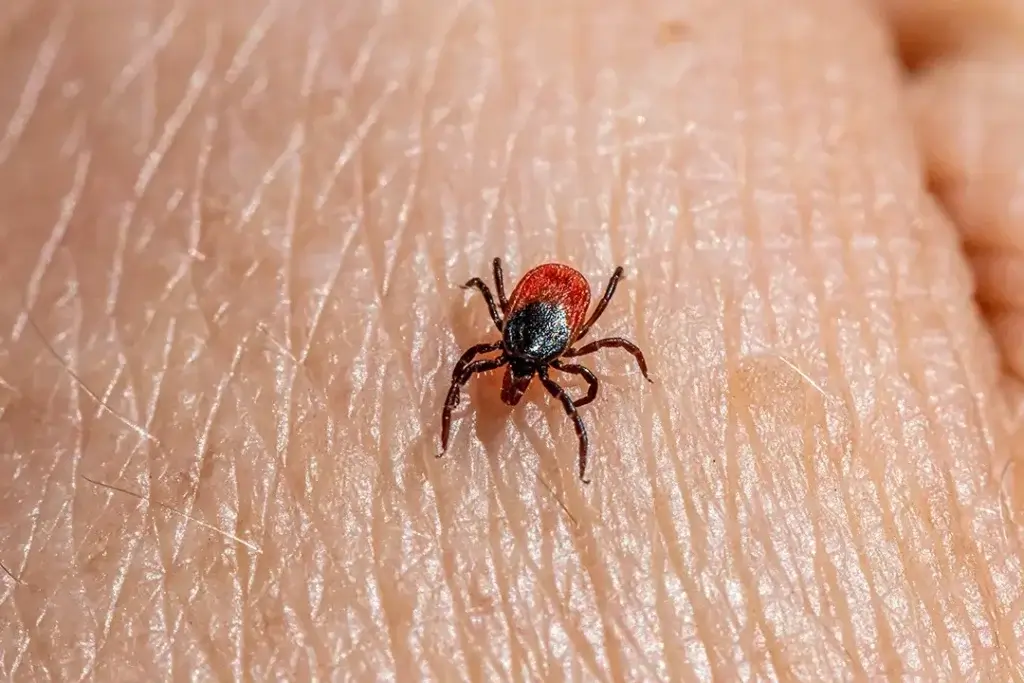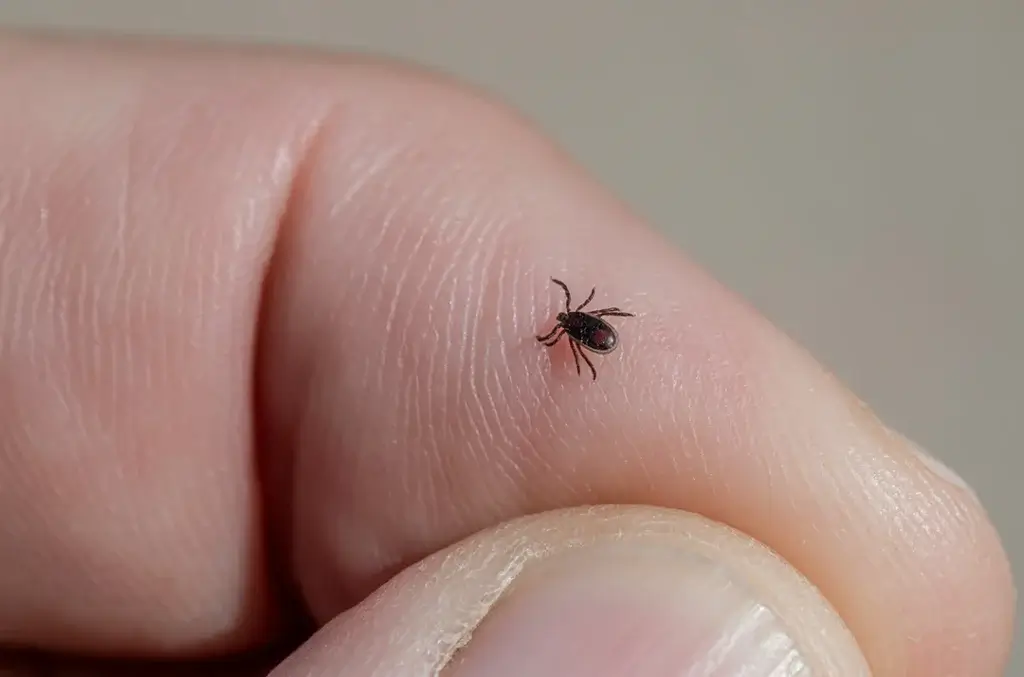
Tick Prevention for North Carolina Residents and Pet Owners
When it comes to health risks presented by pests, ticks are near the top of the list. This is because the diseases spread by ticks can have lifelong health implications - which makes tick prevention a top priority. Let's look at the importance of tick control services and tick prevention in North Carolina.

Table of Contents
What Are Ticks?
Ticks are small arachnids that belong to the order Ixodida. They are ectoparasites, which means they feed on the blood of mammals, birds, and sometimes reptiles and amphibians. These tiny creatures are known for their flattened, oval-shaped bodies and are often mistaken for insects, but they are actually more closely related to spiders. Ticks have four pairs of legs, making them arachnids, while insects typically have three pairs.
How Do Ticks Transmit Diseases?
Ticks are adapted for a parasitic lifestyle, with specialized mouthparts that allow them to pierce the skin of their hosts and feed on their blood. Depending on the tick species and life stage, they may attach to a host for a short feeding period or remain attached for several days. During feeding, ticks can transmit a variety of diseases, making them of significant concern for both human and animal health.
What Diseases Do Ticks Transmit?
There are various species of ticks found worldwide, with different species preferring different hosts. Some ticks are known to transmit diseases such as Lyme disease, Rocky Mountain spotted fever, and various forms of ehrlichiosis. Controlling tick populations and taking preventive measures to avoid tick bites, especially when spending time outdoors in wooded or grassy areas, is essential for minimizing the risk of tick-borne illnesses.

4 Types of Ticks in North Carolina
There are numerous tick species found around the world, but there are four main types of ticks that call North Carolina home. Here are some of the common tick species:
- Black-Legged Tick (Ixodes scapularis): Also known as the deer tick, this tick species is known for transmitting Lyme disease and is commonly found in wooded and grassy areas in North America.
- American Dog Tick (Dermacentor variabilis): These ticks are often found in grassy areas and can transmit diseases like Rocky Mountain spotted fever.
- Brown Dog Tick (Rhipicephalus sanguineus): This species primarily infests dogs but can occasionally bite humans. It is found worldwide and can transmit diseases like canine ehrlichiosis.
- Lone Star Tick (Amblyomma americanum): Named for the white spot on the female's back, this tick is found in the southeastern and eastern United States and can transmit diseases like ehrlichiosis and tularemia.
These are just a few examples of tick species, and there are many more with varying geographic distributions and potential disease transmission capabilities. Understanding the tick species in your area and taking preventive measures, such as using tick repellents and conducting regular tick checks, contributes to tick prevention and can help reduce the risk of tick-borne diseases.
Tick Prevention Tips
Ticks are tricky. They can easily latch onto or burrow into clothing, skin, hair, or fur. They live in tall grass, palmetto bushes, trees, and other wooded outdoor areas - but it only takes one bite to put you or your family at risk.
That's why tick control for yards and tick prevention behaviors are so important at keeping you and your family safe! Check out these tick prevention tips:
Tick Prevention: Personal Protection
Guarding against tick diseases begins with personal protection. When you or anyone who lives inside your home goes outside, it is important to take precautions. Here are a few ways that tick bites can be prevented:
- Opportunistic ticks wait in grass or vegetation for a host to walk by. Avoiding tall grass and vegetation can help you avoid picking up ticks.
- Ticks don't fall from trees or jump on you. They cling to you as you walk by and crawl up your body. Tucking your pants into your socks and your shirt into your pants will make it harder for ticks to find skin to attach to. Wearing bright-colored clothing will help you be able to detect these bugs when they do get on you.
- Apply an EPA-approved tick repellent on exposed skin and clothing when outdoors.
- Mosquito repellent can work against ticks. Spraying some on your feet and legs to may help prevent ticks.
- Perform regular tick checks on your body, clothing, and pets after spending time outdoors.
- Shower promptly after outdoor activities to wash off unattached ticks and conduct a thorough tick check.
Tick Prevention: Pet Protection
Since ticks seek animal hosts, our dogs and cats can become a threat to us. Not only do dogs and cats bring ticks in from the outside, they help ticks spread within a house by picking up ticks that are brought in by mice and rats. Here are some strategies for protecting your pets and yourself from tick-borne diseases.
- Veterinarian-prescribed tick products are your frontline defense.
- If you have a dog, consider creating a fenced in play area. This will reduce the chance of wildlife bringing ticks into the area your dog plays and prevent your dog from exploring areas around your home that harbor ticks.
- Do routine checks for ticks on ears and between toes.
Tick Prevention: Tick Control for Yards
Before ticks are brought into your home, they're brought into your yard and carried into shaded locations around your foundation perimeter. If they find the moisture they need, they can develop from egg to adult in these locations.
Here are some tips for controlling moisture around the outside of your home.
- Check any spigots and hoses for leaks that could cause puddles to form near your home.
- Check gutters for obstructions that allow water to run down the side of your home.
- Trim trees to let the sunlight in. The sun is your number-one tool for keeping your foundation perimeter dry.
- Give your landscaping only the water it needs to thrive. Not only is overwatering bad for your plants, it inspires pest habitation.
Tick Prevention: Reducing Potential Transports
It isn't likely that ticks will enter your home on their own. They will ride in on a host, so these tips are exclusion tips for mice and rats.
- Inspect your home for any holes and repair or fill those holes. A caulking gun is a great tool for a temporary patching of holes.
- Rodents prefer areas that have lots of harborage options. If you have stacked wood, construction materials, toys, or other objects near your foundation walls, move them away or stow them away. This will make your exterior walls less inviting to rodents.
- Rodents like overgrowth. It is important to keep your grass trimmed and vegetation neat. And avoid having tall grass near your foundation.
Removing Ticks
Tick prevention behaviors can only go so far. If you hike often, you may find ticks crawling on you - or even biting you at some point. If you are in an area known for tick-borne diseases, consult a healthcare professional if you experience symptoms like fever, fatigue, or a rash following a tick bite.
Here are step-by-step instructions on how to safely remove ticks from human skin:
Materials Needed:
- Fine-tipped tweezers
- Antiseptic wipes or rubbing alcohol
- A small container with a lid (e.g., a jar or pill bottle)
Tick Removal Instructions:
- Prepare Your Materials: Before starting, gather your materials, including tweezers, antiseptic wipes or rubbing alcohol, and a container. Ensure good lighting to see the tick clearly.
- Wash Your Hands: Begin by thoroughly washing your hands with soap and water to reduce the risk of infection.
- Wear Gloves (Optional): While wearing disposable gloves is not necessary, it can provide an extra layer of protection against potential pathogens the tick may carry.
- Examine the Tick: Carefully examine the tick. Identify whether it is attached to the skin and how deeply it is embedded. Try to determine its size and if it appears engorged with blood.
- Grasp the Tick: Using fine-tipped tweezers, grasp the tick as close to the skin's surface as possible. Avoid squeezing the tick's body, as this can push potentially infected fluid into the skin.
- Remove the Tick: With a steady, even pressure, pull the tick upward and outward away from the skin. Do this gently and without twisting. The goal is to remove the entire tick, including its mouthparts. It may take some patience, as ticks can be firmly attached.
- Place the Tick in a Container: Once removed, place the tick in a small container with a lid. You may want to label the container with the date and location of the tick bite for reference.
- Clean the Bite Area: After successfully removing the tick, clean the bite area and your hands with antiseptic wipes or rubbing alcohol. This helps prevent infection.
- Dispose of the Tick: Dispose of the tick by sealing the container and placing it in the trash. Avoid crushing the tick with your fingers.
- Monitor for Symptoms: Keep an eye on the bite area for any signs of infection or an allergic reaction, such as redness, swelling, or rash. If you experience any concerning symptoms, seek medical attention.
Professional Tick Prevention & Tick Control in North Carolina
While all of the tips given above will go a long way toward helping you keep ticks out of your home, it is always best to partner with a pest-management professional. An educated and experienced technician is trained in the latest pest-control strategies for ticks and other pest creatures. Your pest control technician will apply products to vulnerable areas that will make them unusable for developing ticks.
For more information or to establish service for your North Carolina home, give us a call today at 828-481-9140, or schedule a pest inspection online!
